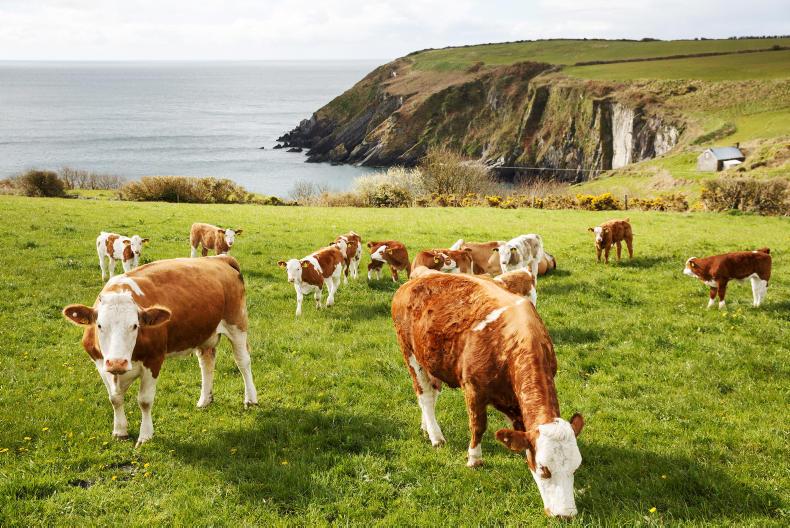March came in like a lion and left like one too. It was a pain in the backside of a month down here, weather wise.
I’ve probably written about weather too much of late, although it has finally turned. It’s been the first year since 2010 that the first rotation hasn’t been completed on the owned land. As a result, some of the grass will be targeted for early silage instead. Due to heavy grass covers and less demand, it is only this week that the first of the artificial fertiliser went out.
The artificial nitrogen detox continues and it will be interesting to see how it goes this year.
Slurry was put on the earlier-grazed paddocks and they have done well.
The vet was out recently to complete the Knowlege Transfer (KT) health plan. In its current form, it didn’t impress me. Some of the questions were ridiculous from a suckler farmer point of view, but nonetheless the boxes were ticked and we got down to the serious business which was our actual herd health plan.
We had a review of vaccine use and picked out salmonella as one we could possibly drop. BVD will remain in the must do vaccination list until such time as the country has got the all clear.
I began completing the herd health plan as part of the BTAP and in fairness it has proved its worth. It would have made sense to stick with the same format rather than what is in place for the current KT health plan. Rather than fire brigade action and stress on man and beast when things went wrong, we are now much more proactive. Health issues that were causing trouble are now almost all under control.
I say almost because since its arrival following the floods of 2012, rumen fluke is still not beaten here. We’re going to see if genetics can play a part in reducing our use of doses.
One cow family tend to be more affected by rumen fluke than any of the others.
They just melt with it, cows and heifers that are in fantastic order in July drop condition at an alarming rate to the point where the animal is unrecognisable. The plan is to take dung samples from this cow line and one other that is normally less affected in June and July. The June sample will be to see what the level of infection, if any, is and the July one to see if there is an increase.
Normal procedure was to dose for worms in June and treat for rumen fluke in September. This wasn’t working out too well on the ground where rumen fluke is a bigger problem. Everything would go fine until the middle of August, coinciding with the rumen fluke lifecycle and performance would visibly drop in those infected.
The 2017 version of operation rumen fluke removal is to hold off on any dosing until results come back on the second dung samples in July and see if we can cull out the problem. It’s far easier to take dung samples than round up and dose every animal, especially if it’s not required for some. I have no issue paying a vet for their time but I do understand why it’s causing consternation among farmers.
The reality that so many beef farms are financially unsustainable without EU backup and therefore depend on schemes as the majority of their income is the biggest reason for farmer discontent.
Perhaps the lack of value farmers place on their own time is second.






 This is a subscriber-only article
This is a subscriber-only article










SHARING OPTIONS: